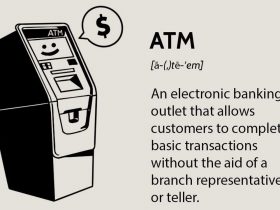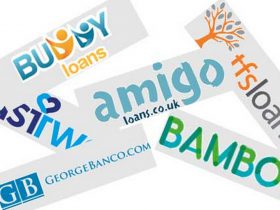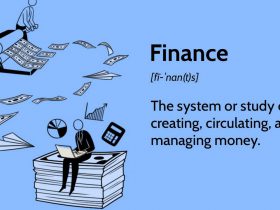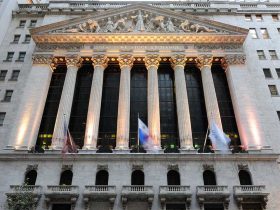A public financial institution is a monetary establishment owned and operated by the federal government or a public entity. Public banks differ from personal banks, that are owned and operated by personal people or entities. The Financial institution of North Dakota is the one public financial institution in america.
Key Takeaways
- A public financial institution is owned and operated by a state or metropolis authorities within the public curiosity.
- The Financial institution of North Dakota is the one public financial institution in america.
- Public banks could also be higher positioned to learn metropolis and state entities and broader communities, however the startup could be difficult.
- Latest monetary crises have sparked widespread curiosity in creating public banks.
How Public Banks Work?
Although their possession is completely different from that of economic banks, public banks nonetheless facilitate the circulate of cash all through the economic system. As an alternative of a metropolis, county, or state inserting funds right into a industrial financial institution and paying charges and curiosity, the federal government manages funds in its personal financial institution. It could actually then theoretically mortgage cash at lowered rates of interest for group funding.?
¡°Public financial institution¡± could be confused with a ¡°publicly-traded financial institution.¡± The latter is a financial institution whose inventory is traded on the inventory market or any financial institution whose monetary info is reported to the general public.
Companies
Public banks are primarily advisable to handle native governments and companies' deposits and different banking companies.
As well as, these banks could possibly supply:
- Infrastructure lending
- Wholesale lending
- Small enterprise lending
- Liquidity and safety for different group banks
At the moment, most state laws and proposals require the general public financial institution to restrict public companies. As an example, they may be required to companion with a neighborhood monetary establishment in the event that they need to settle for deposits from most of the people. Or they won’t be allowed to just accept deposits from non-government entities in any respect.
A public financial institution can supply among the similar retail deposit and lending merchandise as conventional banks, together with saving and checking accounts, loans, and certificates of deposit (CDs).
Nonetheless, considerations in regards to the authorities competing with personal companies could restrict even these companies. For instance, the financial institution could have just one location, solely be obtainable to native residents, or not supply commonplace options equivalent to bank cards, on-line invoice pay and even debit playing cards.
Options
A public financial institution is owned by the federal government or a authorities entity. Authorities possession means the general public has enter within the financial institution's selections, as elected officers or representatives assist management the financial institution.
Public banks are centered on public curiosity and could also be mandated to satisfy the monetary wants of the group, metropolis, or state they serve. Since public banks aren't essentially centered on maximizing short-term income, they could as a substitute give attention to the group's long-term wants.
Challenges
Establishing a public financial institution could be tough as a result of it requires a regulatory framework and startup capital to launch. Public banks might compete with current native industrial banks, which might be counterproductive for the communities they serve.
Potential Impression
Public banks could also be chartered to serve particular public coverage targets. Conventional banks aren't assembly these targets, as a consequence of stress to maximise shareholder income.
Historical past of Public Banks and the Financial institution of North Dakota
In america, the First Financial institution of america was established in 1791, however as a consequence of political battle, its constitution wasn't renewed in 1811. After a second try at a nationwide financial institution failed, state governments started chartering banks. Many state banks closed after the monetary panic of 1837. A brand new Federal banking system was established in 1863 with the creation of a nationwide forex, and state banks slowly disappeared.
The Financial institution of North Dakota was established in 1919 after personal banks made lending tough for the state's agricultural business. The financial institution is operated, managed, and managed by an industrial fee, together with the state governor, agriculture commissioner, and legal professional basic. Lending is completed by way of partnerships with native banks and credit score unions.
Word
The territory of American Samoa established the Territorial Financial institution of American Samoa in 2016 to offer primary banking companies to its residents. It's one of many territory's solely choices for home banking companies.
Marketing campaign for Public Banks in america
Though the Financial institution of North Dakota is the one public financial institution within the U.S., efforts are rising to start out extra. In two-thirds of U.S. states, grassroots organizations supporting public banks are advocating for the distinctive monetary establishment, and in lots of states, legislators are introducing payments supporting public banks.
Listed below are a couple of examples:?
- California: Handed the Public Banking Act in 2019, which permits municipal public banks to be chartered.?
- New Jersey: Governor Phil Murphy created a public financial institution implementation board in 2019 to broaden entry to capital for the state's most under-served communities.?
- New York: Representatives launched a invoice to determine a committee to think about the feasibility of a public financial institution.
A number of California cities, together with San Francisco, are finding out or establishing city-owned or regional banks. San Francisco¡¯s public financial institution will serve low-income communities and communities of coloration by offering inexpensive housing and enterprise financing.
Public Banks vs. Conventional Banks
| Public Financial institution | Conventional Financial institution |
| Owned and operated by the federal government or a public entity | Owned and operated by personal people or entities |
| Normally have a social or developmental focus for the area people | Primarily give attention to maximizing income and shareholder worth |
| Can present monetary companies at a decrease value for infrastructure growth? | Native governments could pay excessive charges and curiosity for infrastructure growth |
| Ruled by laws and insurance policies set by the federal government or public entity and accountable to the general public | Could have extra flexibility and decision-making and operations in comparison with public banks |
| Primarily serves municipal, county or state authorities however could serve the general public in a restricted method | Serves all kinds of shoppers, together with most of the people |
Public banks supply companies very similar to conventional banks, as an example, checking and financial savings accounts, deposits, and loans. Nonetheless, the 2 sorts of banks differ in construction and operations.
Whereas conventional banks are owned by shareholders, public banks are owned by a municipality. As an alternative of sharing income with shareholders, public banks use income to learn their group, metropolis, or state. Or the general public banks can make investments income in line with socially accountable ideas.
Based on advocates, public banks received¡¯t have to expend assets on advertising and marketing and different overhead¡ªso there¡¯s extra to spend money on infrastructure and group.??
Professionals and Cons of a Public Financial institution
Many of those execs and cons are theoretical, as public banks aren¡¯t but in widespread operation.
Professionals
-
Wide selection of economic companies
-
Inexpensive public challenge financing
-
Group-focused
-
Financing throughout financial crises
Cons
-
Could not supply federal insurance coverage
-
Weak native economic system might threaten success
-
Danger of mismanagement of funds
-
Lack of competitors
Professionals of a Public Financial institution Defined
- Wide selection of economic companies: Public banks can spend money on the area people's wants whereas additionally making banking companies¡ªdeposit accounts, loans, bank cards, and so on.¡ªextra accessible.?
- Inexpensive public challenge financing: State and metropolis governments have extra flexibility to provoke public initiatives with out counting on costly lending from personal banks.?
- Group-focused: Public banks can select to help group infrastructure and initiatives.?
- Financing throughout financial crises: As seen in North Dakota, public banks can reduce the consequences of financial downturns or monetary crises by offering funding to people and companies.
Cons of a Public Banks Defined
- Could not supply federal deposit insurance coverage: Federally insured banks supply $250,000 in FDIC deposit insurance coverage. The Financial institution of North Dakota notes that ¡°deposits are assured by the total religion and credit score of the State of North Dakota.¡±?
- Weak native economic system might threaten success: Public banks could also be extra weak to native financial instability since lots of their loans are concentrated in a selected space or business.?
- Danger of fund mismanagement: Political interference, mismanagement of funds, and forms may also threaten a public financial institution's stability.?
- Lack of public companies: Because of considerations about competitors, a public financial institution could not serve the general public or solely supply restricted companies.?
What Are Some Public Banks within the World?
Property within the billions of {dollars} reside in public banks worldwide. Notable public banks embody Sparkasse in Germany (based in 1778), ICBC China (the world¡¯s largest public financial institution), and Financial institution Misr, nationalized in 1960.?
Who Owns a Public Financial institution?
Public banks are both wholly or partially owned by a federal, state, county, or metropolis authorities.
What Is the Principal Benefit of a Public Financial institution?
The principle benefit of a public financial institution is that income can be utilized to satisfy group wants that conventional banks aren¡¯t assembly. Native governments can get hold of funds for numerous initiatives with out taking over in depth debt by issuing bonds.
What Is a Personal Financial institution?
The time period personal financial institution often refers back to the monetary companies offered to high-net-worth and ultra-high-net-worth people, households, and companies. Clients sometimes have a devoted relationship supervisor or liaison to assist conduct transactions. The time period "personal financial institution" might additionally seek advice from a financial institution owned by shareholders or one other entity vs. being government-owned.
Is a Personal Financial institution Higher Than a Public Financial institution?
Working with a non-public financial institution could also be higher for individuals with a large quantity of investable property and sophisticated monetary wants. Personal banks can extra simply present numerous companies equivalent to advanced asset administration, lending companies, tax planning and different monetary planning companies.
The Backside Line
Public banks have the distinctive benefit of providing banking companies whereas serving particular public coverage targets. Whereas they could be a beneficial useful resource for underserved communities and the precise authorities entity, establishing a public financial institution could be difficult, and there are potential dangers to their stability. With rising curiosity in policy-focused banking options, a number of metropolis and state governments have begun exploring public banks for his or her group.













Leave a Reply